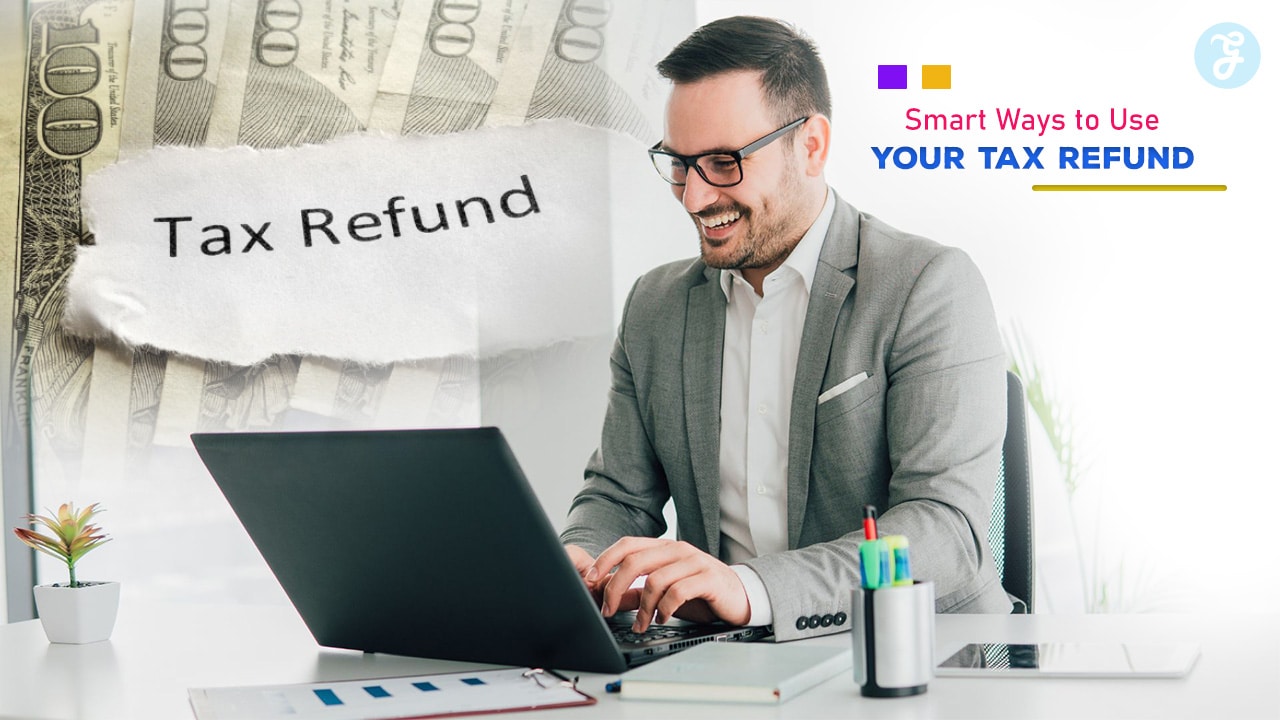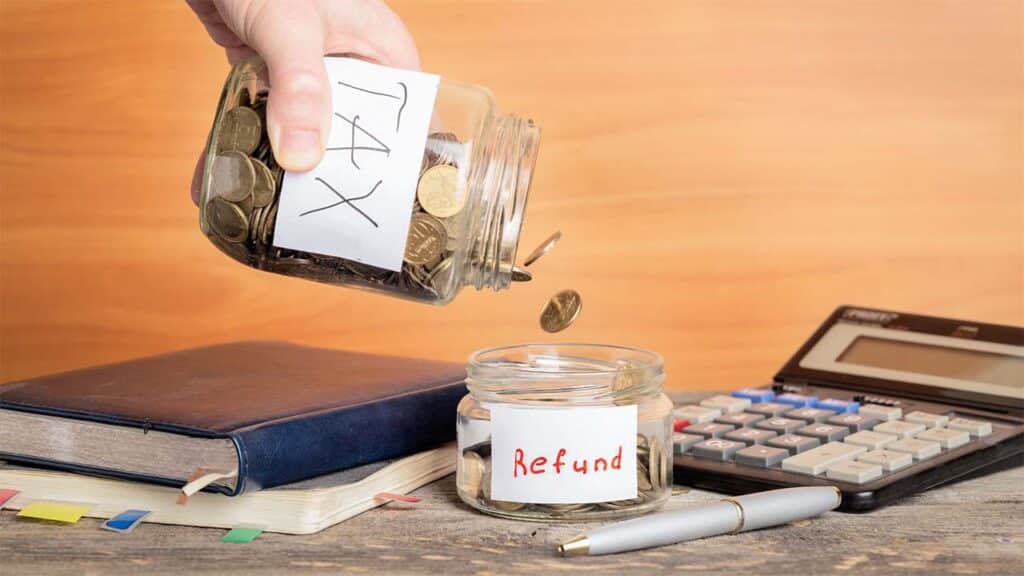Receiving a tax refund can be an exciting opportunity to improve your financial situation. Rather than splurging it all on impulse buys, consider using your refund in ways that benefit your long-term financial well-being.
By carefully planning how you use your tax refund, you can pay down debt, build savings, invest in your future, and even reward yourself responsibly.
Here are 10 smart ways to use your tax refund, each with detailed explanations on how it can enhance your financial health.
1. Pay Off High-Interest Debt
Why It’s Smart:
Using your tax refund to pay down or eliminate high-interest debt, such as credit card balances or personal loans, is one of the best ways to improve your financial health.
High-interest debt can quickly accumulate, and paying it off reduces the amount of interest you’ll have to pay in the long run.
How to Do It:
- Prioritize the highest interest rates:
Start by paying off debts with the highest interest rates first, such as credit card balances, as these can cost you the most over time.
- Make a lump-sum payment:
If your refund is large enough, make a significant payment toward your balance.
This will lower the amount of interest you’re charged moving forward.
- Consider debt consolidation:
If you have multiple high-interest debts, consider using your tax refund to consolidate them into one lower-interest payment, simplifying your finances and reducing overall interest costs.
Benefit:
Reducing or eliminating high-interest debt can free up money in your monthly budget and save you from paying excessive interest, improving your financial stability over time.
2. Build or Boost Your Emergency Fund
Why It’s Smart:
An emergency fund provides a financial safety net in case of unexpected expenses, such as medical bills, car repairs, or job loss.
Financial experts typically recommend having three to six months’ worth of living expenses saved in an easily accessible account.
How to Do It:
- Start or increase your fund:
If you don’t have an emergency fund, consider depositing a portion of your tax refund into a high-yield savings account to get started.
If you already have a fund, boost it to further protect yourself against unforeseen financial setbacks.
- Automate savings:
Consider setting up automatic transfers from your checking account to your emergency fund each month to gradually build it over time.
Your tax refund can give you a significant head start on reaching your savings goal.
- Set a specific goal:
Calculate how much you need to cover essential expenses for three to six months (rent, utilities, groceries, etc.) and aim to build your emergency fund to that amount.
Benefit:
A fully funded emergency account gives you peace of mind, knowing you can handle unexpected financial challenges without going into debt or relying on credit cards.
3. Invest in a Retirement Account
Why It’s Smart:
Investing your tax refund in a Retirement account, such as an IRA (Individual Retirement Account) or 401(k), can significantly boost your future financial security.
The earlier you start saving for retirement, the more time your money has to grow through compound interest.
How to Do It:
- Contribute to an IRA:
You can contribute up to $6,500 annually (or $7,500 if you’re 50 or older) to a traditional or Roth IRA.
Use your tax refund to make a lump-sum contribution.
- Maximize employer 401(k) match:
If your employer offers a 401(k) match and you’re not contributing enough to take full advantage of it, use your tax refund to increase your 401(k) contributions.
- Consider long-term growth:
Investing in retirement accounts allows your money to grow tax-free or tax-deferred, which can lead to substantial savings over the long term.
Benefit:
Investing in your retirement now will help ensure you have enough saved when you’re ready to retire, reducing the financial stress of your later years and maximizing your tax advantages.
4. Fund a 529 College Savings Plan
Why It’s Smart:
If you have children or plan to pursue further education, a 529 College Savings Plan is a tax-advantaged way to save for future education costs.
The money you invest in a 529 plan grows tax-free and can be withdrawn tax-free when used for qualifying educational expenses.
How to Do It:
- Start or contribute to a 529 plan:
Use your tax refund to make a lump-sum contribution to a 529 plan for your child or for yourself if you’re considering future education.
- Take advantage of state tax benefits:
Many states offer tax deductions or credits for contributions to a 529 plan, which can provide you with additional savings at tax time.
- Set up recurring contributions:
In addition to your lump-sum contribution, consider setting up regular monthly contributions to ensure that you’re steadily growing the college savings fund.
Benefit:
A 529 plan helps offset the rising costs of college tuition, room and board, and other education-related expenses while offering tax advantages that can increase the value of your contributions.
5. Make Home Improvements
Why It’s Smart:
Using your tax refund to make home improvements can increase the value of your home and improve your quality of life.
Some home improvements, such as energy-efficient upgrades, can also lower your utility bills and qualify you for tax credits.
How to Do It:
- Prioritize energy-efficient upgrades:
Consider upgrades like installing energy-efficient windows, adding insulation, or purchasing ENERGY STAR appliances.
These improvements not only reduce energy costs but may also qualify you for federal tax credits.
- Invest in necessary repairs:
Use your refund to cover essential home repairs, such as fixing a leaky roof, repairing plumbing issues, or upgrading outdated electrical systems.
- Enhance curb appeal:
If you’re thinking of selling your home in the future, consider using your refund for landscaping, painting, or exterior improvements to increase your home’s curb appeal and resale value.
Benefit:
Home improvements can make your living environment more comfortable, reduce long-term costs, and increase your home’s resale value, making it a worthwhile investment.
6. Start or Add to an Investment Portfolio
Why It’s Smart:
Investing your tax refund can grow your wealth over time and help you reach long-term financial goals.
Whether you’re a beginner or experienced investor, using your tax refund to start or expand your investment portfolio can provide you with greater financial freedom and security.
How to Do It:
- Open a brokerage account:
If you don’t already have one, use your tax refund to open a brokerage account where you can buy stocks, bonds, mutual funds, or ETFs.
- Diversify your investments:
Use your refund to add to an existing portfolio, making sure to diversify across different asset classes, sectors, and geographic regions to reduce risk.
- Consider a robo-advisor:
For beginner investors, a robo-advisor can manage your investments for you, offering low fees and automated portfolio management.
Benefit:
Investing your tax refund allows you to build wealth and take advantage of compound interest.
Over time, your money can grow significantly, helping you achieve financial goals like buying a home, saving for retirement, or funding future large purchases.
7. Pay Down Your Mortgage
Why It’s Smart:
Making extra payments on your mortgage can significantly reduce the total interest you’ll pay over the life of the loan, potentially shortening the repayment term and freeing up future income.
Even one lump-sum payment made with your tax refund can make a noticeable impact.
How to Do It:
- Make an extra principal payment:
Use your tax refund to make a one-time payment toward the principal balance of your mortgage.
This reduces the overall interest paid and shortens the loan term.
- Pay biweekly instead of monthly:
If your lender allows it, switch to biweekly mortgage payments.
This results in an extra payment each year and can be started with your tax refund.
- Consult with your lender:
Make sure the extra payment goes directly toward the principal balance, as some lenders may apply it toward interest unless specified otherwise.
Benefit:
Paying down your mortgage faster can save you thousands of dollars in interest and provide financial freedom sooner, allowing you to use your income for other financial goals.
8. Start or Expand a Business
Why It’s Smart:
If you’ve been dreaming of starting your own business or growing an existing one, using your tax refund as startup capital can be a smart move.
Investing in your entrepreneurial goals can provide financial independence, personal fulfillment, and potentially greater long-term returns.
How to Do It:
- Cover startup costs:
Use your tax refund to fund essential business startup costs, such as registering your business, purchasing inventory, or setting up a website.
- Invest in marketing:
If you already have a business, use your tax refund to expand your marketing efforts, whether through social media advertising, search engine optimization (SEO), or creating promotional materials.
- Purchase equipment:
Invest in tools, equipment, or technology that will help improve efficiency or productivity in your business.
Benefit:
Using your tax refund to start or grow a business can help you build long-term wealth, create job opportunities, and give you the freedom to pursue your passion.
9. Prepay Bills or Expenses
Why It’s Smart:
Prepaying bills, such as utilities, rent, or insurance, can provide you with financial breathing room in the months ahead.
By using your tax refund to cover upcoming expenses, you can reduce financial stress and have more flexibility in your budget.
How to Do It:
- Prepay insurance premiums:
If your car or home insurance allows for annual payments, use your tax refund to pay for a year’s worth of coverage, often at a discount.
- Pay ahead on utilities:
Many utility companies allow customers to pay ahead on their bills.
Use your refund to cover several months’ worth of electricity, water, or internet bills.
- Reduce recurring debt:
Prepaying student loans, car payments, or other debts can lower your overall balance and reduce future payments.
Benefit:
Prepaying bills frees up future income, reduces the stress of monthly payments, and provides greater financial flexibility for unexpected expenses or opportunities.
10. Treat Yourself Responsibly
Why It’s Smart:
While it’s important to use your tax refund wisely, it’s equally important to reward yourself for your hard work.
Allocating a small portion of your refund for a “treat” allows you to enjoy your money without going overboard.
Responsible splurging helps you maintain balance and prevent feelings of deprivation.
How to Do It:
- Set a budget for fun:
Allocate 10-20% of your tax refund to something that brings you joy, such as a weekend getaway, new clothes, or a special meal.
- Prioritize experiences:
Consider spending your refund on experiences rather than material items.
A memorable trip, concert, or activity can provide long-lasting satisfaction.
- Invest in self-care:
Use part of your refund to invest in your well-being, whether through fitness classes, a spa day, or a mental health retreat.
Benefit:
By responsibly setting aside a portion of your refund for fun or self-care, you can enjoy your hard-earned money without derailing your long-term financial goals.
Final Thoughts
Your tax refund is a valuable financial resource, and how you choose to use it can significantly impact your financial health.
By focusing on smart financial moves, such as paying off high-interest debt, building savings, investing in your future, or starting a business, you can make the most of your refund while improving your long-term stability.
At the same time, responsibly treating yourself can provide balance and ensure you enjoy the benefits of your hard work.







































